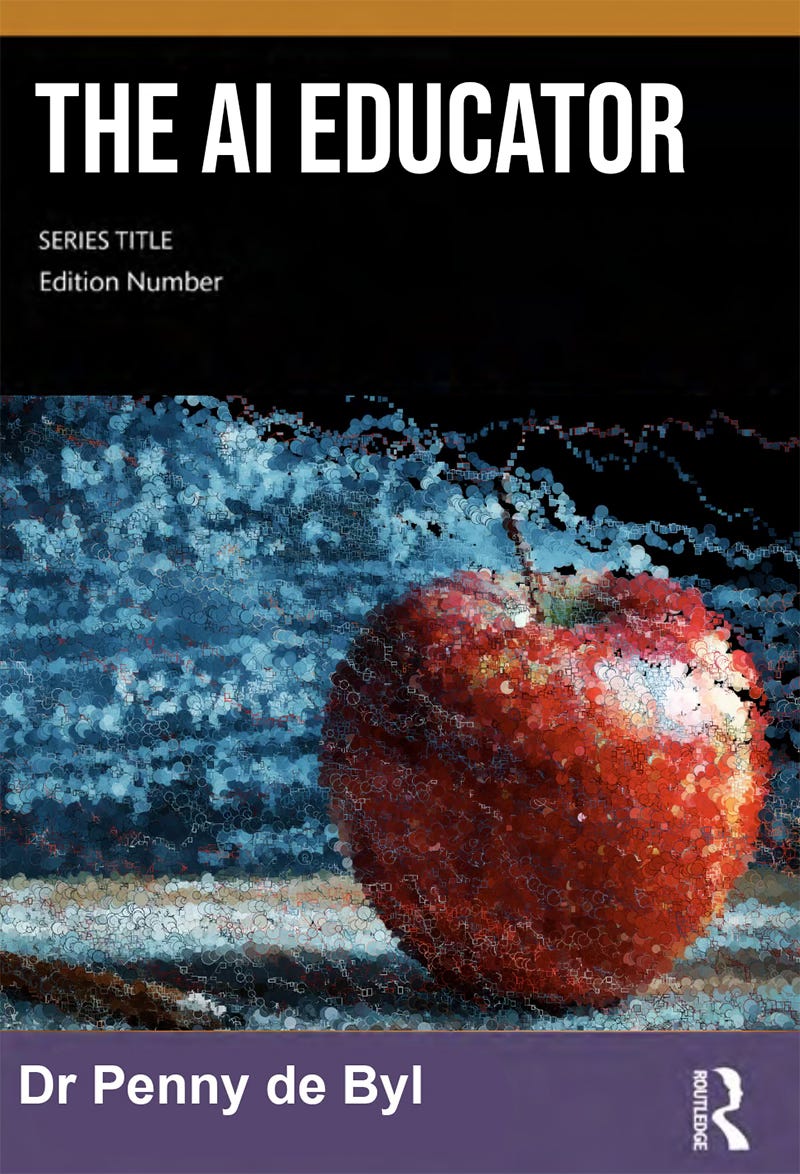Greetings and Salutations
Introducing The AI Educator
What Can I Say About My New Book?
Well, for starters it’s a departure from the norm.
After years of writing sci-fi novels and textbooks on game development, I’ve taken a new turn. This book isn’t fiction, and it’s not a how-to manual either. It’s about something that’s reshaping the domain I’ve lived and worked in for over three decades: how artificial intelligence is transforming education and what we, as educators, should do about it.
Not a Crisis, But a Catalyst
Now, that might sound like the setup for an advocating a flat out ban. But quite the opposite is true. In all my years as a teacher and academic, I’ve never seen a disruption quite like generative AI. The speed and scale of its impact have been extraordinary and so has the scrambling that’s followed: banning it, policing it, experimenting with it, and, for some, learning to embrace it.
And let’s be honest, the biggest focus has been on cheating.
Every day, there’s a new headline about students using AI to complete their assignments. Of course, students have always found ways to cut corners, but GenAI has made that temptation frictionless. More importantly, it’s exposed something deeper: that our traditional ways of assessing learning simply don’t hold up anymore. Essays, reports, and un-invigilated tests no longer guarantee evidence of understanding or critical thought.
These concerns reveal something important: educators aren’t just afraid of AI itself. We’re uneasy about what it reflects: the cracks in our systems and the outdated assumptions about how learning works.
But that’s a conversation for another post.
Motivation #1: Understanding the Disruption
My first motivation for writing this book was to truly understand what we’re dealing with. I’ve worked with AI for much of my career and even created a course on Udemy about how to use generative AI. But its impact on pedagogy and curriculum was still a blurry area and I know many educators feel the same way.
Through the research and writing process, I learned a lot. More importantly, I discovered a growing community of researchers and teachers who are doing remarkable work not just studying AI’s disruption, but experimenting with how to integrate it meaningfully into their practice. They’re not running from it; they’re leaning into it.
Motivation #2: Empowering Educators
That brings me to my second motivation: to share that research and practice with you.
There’s been no shortage of calls for educators to embrace AI, but very little concrete advice about how to actually do that. What should it look like in the classroom? How do we use it without losing our pedagogical compass?
My goal with The AI Educator is to help answer those questions. To empower teachers with the understanding, tools, and confidence to use GenAI with purpose and integrity. It’s not about replacing teachers; it’s about reimagining teaching in a world where AI is part of the learning process.
Beyond the Essay Prompt
Sure, you can ask ChatGPT to write a decent essay on the Industrial Revolution and get something serviceable in return. But that’s not where its power lies. The real strength of generative AI is in the dialogue; the back-and-forth that challenges your thinking, refines your ideas, and helps you see concepts from new angles.
That’s where the real learning happens.
Looking Ahead
Over the coming weeks, I’ll be unpacking key ideas from The AI Educator. From the myths and fears surrounding AI in schools, to the redesign of assessment, to practical ways teachers can bring AI into their classrooms with confidence and care.
Because this isn’t about AI replacing us.
It’s about us redefining what great teaching looks like in the age of AI.
Follow along for more reflections, resources, and practical insights from The AI Educator: A guide to teaching, learning, and thriving in the era of generative AI.


Finally, someone is addressing the core purpose of AI in education: not just making tasks easier but fostering a deeper understanding and greater depth of knowledge.